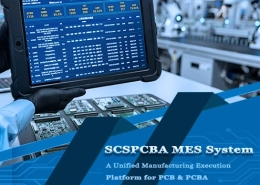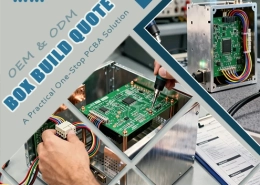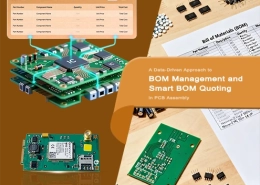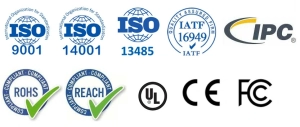Medical Printed Circuit Board Assembly & OEM/ODM Services
Circuit boards are one of the most critical components in electronic devices. They serve as the foundation for mounting electronic components and establishing electrical connections between them. In the medical electronics industry, circuit board manufacturing are indispensable for the functionality of various terminal medical devices. Printed circuit board assembly enables strong connections between PCB board components and allows devices to perform consistently and reliably.
Medical device manufacturing is inseparable from advanced circuit design, PCB board fabrication, and assembly technologies. The medical industry’s strict quality requirements drive the development of high-performance printed circuit assembly, raising the bar for reliability, precision, and miniaturization.
1. Circuit Board Assembly in the Medical Field
● Wearable Medical Equipment
Wearable medical devices monitor a user’s physical state, activity, and vital signs in real time. They require compact, lightweight designs without compromising performance. The manufacturing of wearable medical printed circuit board assembly is essential to support miniaturization, signal accuracy, and wireless connectivity.
Advancements in circuit board assembly—including high-density layouts, micro-components, and refined soldering—enable modern wearables to process data efficiently while being comfortable and portable.
● Implantable Medical Devices
Implantable devices such as cochlear implants or neurostimulators rely heavily on miniaturized, biocompatible, and high-reliability circuit boards. These devices demand:
-
Multilayer circuit board and HDI (High-Density Interconnect) PCB design.
-
Flexible PCB boards conform to the body’s structure.
-
High-performance circuit board assembly for signal transmission and processing.
Examples:
-
Hearing implants use medical-grade circuit boards to convert sound into electrical signals.
-
Neurostimulators leverage compact, multi-layered PCBs to deliver electrical pulses for pain or neurological disorder management.
● Heart Rate Monitoring Devices
From wrist-worn monitors to clinical ECG machines, these devices depend on advanced medical circuit board manufacturing for signal acquisition, processing, power regulation, and wireless data transmission.
Examples:
-
Heart rate monitors use high-precision PCB board fabrication to capture and transmit heart data via Bluetooth.
-
Electrocardiographs (ECG/EKG) use multi-channel PCBs to collect and analyze cardiac signals, with wireless modules sending data to mobile apps or cloud platforms for diagnosis.
● Medical Sterilization Equipment
Devices like UV sterilizers and disinfection robots depend on PCB printed circuit board assembly systems for control, power regulation, sensor integration, and data logging.
Examples:
-
UV sterilizers integrate logic circuits on PCB boards to manage sterilization parameters like UV intensity and ozone concentration.
-
Disinfection robots use embedded PCB boards to control power conversion, track usage data, and drive user interface components such as screens and indicator lights.
These applications highlight how medical circuit board manufacturing ensures critical sterilization equipment’s accuracy, safety, and intelligence.

2. OEM/ODM Circuit Board Services for the Medical Industry
To meet the increasing complexity and customization needs of modern medical devices, many printed circuit board manufacturers are turning to professional OEM (Original Equipment Manufacturer) and ODM (Original Design Manufacturer) partners for circuit board solutions. These services offer significant advantages for medical electronics projects:
● One-Stop PCBA Solution
From circuit board design to PCB manufacturing, PCB board assembly, PCB testing, box build assembly, and packaging, OEM/ODM services streamline the entire supply chain. Medical clients can focus on core technology and marketing while the OEM handles technical execution.
● Customization & Flexibility
ODM services provide end-to-end customization based on client needs, including:
-
Multi-layer medical circuit boards
-
Rigid-flex board structures
-
High-density and miniaturized PCB layouts
-
Biocompatible materials and conformal coatings
● Strict Quality & Compliance Control
Reputable OEM/ODM partners adhere to international medical certifications such as:
-
ISO 13485 for medical device quality systems
-
IPC-A-610 Class 3 for high-reliability electronic assemblies
-
RoHS and REACH for hazardous substance control
-
Complete traceability for each circuit board electronic assembly batch
● Innovation Support
Advanced OEM/ODM printed circuit board manufacturers also offer DFM (Design for Manufacturability) support, prototyping, and product improvement services, helping medical device brands stay ahead in a highly competitive field.
By choosing a reliable OEM/ODM circuit board service provider, medical device companies can ensure their products meet the highest standards of safety, innovation, and performance, without the burden of managing manufacturing logistics.
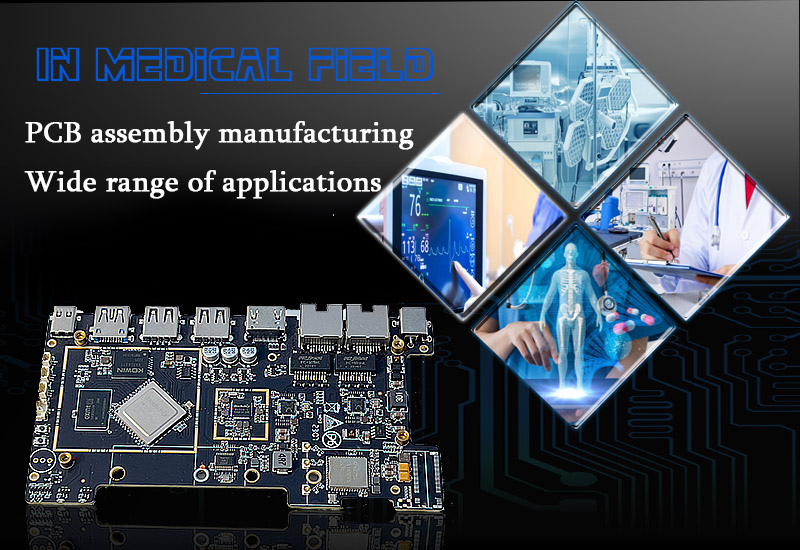
3. Medical-Grade Circuit Board Assembly Standards
The medical field imposes strict requirements on circuit boards and printed circuit assembly, ensuring patient safety and product reliability. Key global standards include:
-
ISO 13485 – Quality system for medical device design & production
-
ISO 14971 – Risk management framework for medical device lifecycle
-
IEC 60601 – Electrical safety and performance of medical devices
-
IPC-A-610 & IPC-A-600 – Acceptability standards for assembly and PCB quality
-
RoHS & REACH – Environmental compliance and hazardous substance restrictions
4. Our Printed Circuit Assembly Services
At SCSPCBA, we offer turnkey OEM/ODM circuit board services tailored to the medical industry, including customized PCB layout, rapid prototyping, mass production, and compliance management. Whether you’re developing the next generation of health wearables or advanced medical robots, our end-to-end circuit board solutions can help bring your vision to life—faster and with greater reliability.

